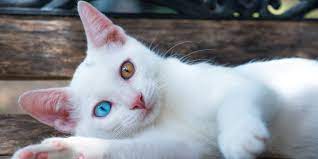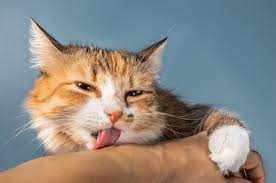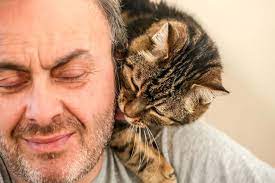Cat Hair Mats Removal: Keep Your Cat Coat Tangle-Free
As cat owners, we adore our feline companions and strive to provide them with the best care possible. One aspect of their well-being is maintaining a healthy and lustrous coat. However, cat hair mats can be a common challenge that pet owners face. In this article, we will explore the causes, signs, and health risks associated with cat hair mats, as well as effective techniques and tools for their removal. We will also provide home remedies, advice on seeking professional assistance, and tips for preventing future matting. So, let’s dive in and ensure our furry friends stay mat-free!
Understanding Cat Hair Mats
Before we look into the removal process, it’s important to understand what cat hair mats are. Hair mats are tangled clumps of fur that occur when loose hair becomes trapped and interwoven. These mats can vary in size, from small knots to large masses that cover significant areas of a cat’s coat. Long-haired breeds are particularly prone to matting, but it can occur in any cat with hair.
Causes of Cat Hair Mats
Several factors contribute to the formation of cat hair mats. Understanding these causes can help prevent them from occurring in the first place. The main causes include:
- Lack of grooming: Cats are meticulous self-groomers, but certain situations may hinder their ability to groom effectively. Obesity, old age, or health issues can limit a cat’s flexibility, resulting in missed spots during grooming sessions.
- Shedding: Cats shed their hair naturally, especially during seasonal changes. If the shed hair isn’t removed through regular brushing, it can accumulate and form mats.
- Moisture and dirt: Moisture, combined with dirt or debris, can lead to the development of mats. Cats who roam outdoors or have access to damp environments are more susceptible to this.
Signs and Symptoms of Cat Hair Mats
Identifying cat hair mats early is crucial for prompt removal. Look out for the following signs and symptoms:
Sign 1: Tangled Fur and Knots Cat hair mats can be visibly observed as tangled fur and knots in various areas of the cat’s coat. These knots may vary in size and severity.
Sign 2: Discomfort or Pain Matted fur can cause discomfort or even pain for your cat. They may exhibit signs of irritation, excessive scratching, or licking the affected areas.
Sign 3: Skin Redness or Inflammation Underneath the mats, the skin can become red or inflamed due to restricted airflow and increased moisture, leading to potential skin infections.
Sign 4: Unpleasant Odor If left unaddressed, mats can accumulate dirt, debris, and even urine or feces. This can result in an unpleasant odor emanating from your cat’s coat.
Health Risks Associated with Cat Hair Mats
Cat hair mats not only affect the appearance and comfort of your feline friend but can also pose health risks. Some potential issues include:
Skin Infections The trapped moisture and lack of airflow beneath the mats create an ideal environment for bacterial or fungal infections. Skin infections can cause discomfort and may require medical treatment.
Parasite Infestation Matted fur can attract parasites such as fleas and ticks, leading to infestations. These parasites can cause further skin irritation and transmit diseases.
Restricted Blood Circulation Severe matting can restrict blood circulation to the skin, potentially leading to tissue damage or necrosis.
Prevention of Cat Hair Mats
Prevention is key to maintaining a mat-free coat for your cat. Here are some preventive measures you can take:
Regular Grooming Establish a regular grooming routine for your cat, especially if they have long hair. Brushing your cat’s fur with a suitable comb or brush can help remove loose hair and prevent matting.
Proper Nutrition A healthy diet is essential for maintaining a cat’s overall well-being, including the condition of their coat. Ensure your cat’s diet is well-balanced and provides the necessary nutrients for healthy hair growth.
Environmental Control If your cat spends time outdoors, consider providing sheltered areas to minimize exposure to moisture and dirt. Keep their living space clean and dry to reduce the likelihood of mat formation.
Regular Veterinary Check-ups Schedule regular visits to your veterinarian for comprehensive examinations. They can help identify underlying health issues that may contribute to matting and provide appropriate guidance.
See also: Why Does My Cat Bite My Legs?
Tools and Techniques for Cat Hair Mats Removal
When it comes to removing cat hair mats, having the right tools and using effective techniques is essential. Here are some commonly used tools and techniques:
Tools for Cat Hair Mats Removal
- Wide-toothed comb: Ideal for detangling and gently removing surface mats.
- Mat breaker or mat splitter: Designed specifically to cut through tough mats without harming the cat’s skin.
- Dematting rake: Suitable for removing large or deeply embedded mats.
Techniques for Cat Hair Mats Removal
- Gradual mat removal: Begin by gently working through the mat’s edges with a wide-toothed comb, then carefully untangle the rest of the mat.
- Cutting technique: For stubborn mats that cannot be untangled, using a mat breaker or mat splitter, carefully cut through the mat without getting too close to the skin.
- Dematting rake usage: If the mats are extensive, use a dematting rake in a gentle sawing motion to break up the mat into smaller sections.
Step-by-Step Guide for Removing Cat Hair Mats
Here’s a step-by-step guide to help you remove cat hair mats effectively:
Step 1: Prepare the Tools Gather the necessary tools for cat hair mats removal, including a wide-toothed comb, mat breaker, and dematting rake.
Step 2: Choose a Calm Environment Find a quiet space where your cat feels comfortable. Reduce distractions to ensure a stress-free experience for both of you.
Step 3: Be Gentle and Patient Approach your cat with a calm and gentle demeanor. If they show signs of discomfort or resistance, take a break and try again later.
Step 4: Start with the Edges Begin by working through the edges of the mat with a wide-toothed comb. Use gentle, slow motions to avoid causing pain or discomfort.
Step 5: Untangle Gradually Once you’ve loosened the edges, gradually work your way through the rest of the mat, using a comb or your fingers to untangle the hair.
Step 6: Use Cutting Techniques if Necessary If the mat proves too stubborn to untangle, carefully use a mat breaker or mat splitter to cut through the mat without harming the cat’s skin.
Step 7: Reward and Praise After successfully removing a mat, reward your cat with treats or praise to create positive associations with the grooming process.
Home Remedies for Cat Hair Mats Removal
In addition to using tools and techniques, some home remedies can help with cat hair mats removal. These remedies can be useful for small mats or maintenance between grooming sessions. However, it’s important to exercise caution and ensure the safety and comfort of your cat. Here are a few home remedies you can try:
Coconut Oil Apply a small amount of coconut oil to the mat and gently work through it with your fingers or a wide-toothed comb. The oil helps lubricate the hair, making it easier to untangle.
Baby Powder Sprinkle some baby powder on the mat and gently massage it in. This can help loosen the tangled hair and make it easier to comb through.
Cornstarch Similar to baby powder, cornstarch can be used to absorb moisture and facilitate mat removal. Sprinkle a small amount on the mat and carefully work through it.
Professional Assistance for Cat Hair Mats Removal
While home remedies and DIY techniques can be effective, some situations may require professional assistance. If you encounter any of the following scenarios, it’s advisable to seek help from a professional groomer or veterinarian:
Severe Matting If your cat’s mats are extensive or deeply embedded, a professional groomer can handle the removal more safely and efficiently.
Fearful or Aggressive Cat Cats that become anxious, fearful, or aggressive during grooming may require sedation or specialized handling techniques. Professionals can ensure the safety of both the cat and the groomer.
See also: Why Is My Cat’s Eye Watering and Squinting?
Underlying Health Issues If you suspect your cat’s matting is due to an underlying health condition, it’s essential to consult a veterinarian. They can diagnose and address any health concerns while providing guidance on mat removal.
Tips for Maintaining a Mat-Free Cat Coat
Prevention is key to maintaining a mat-free cat coat. Here are some tips to help you keep your feline friend’s coat in top shape:
Regular Brushing Establish a regular brushing routine suited to your cat’s hair length and type. Brushing helps remove loose hair, prevent matting, and strengthen the bond between you and your cat.
Use Cat-Friendly Shampoos When bathing your cat, use cat-specific shampoos that promote coat health and reduce mat formation. Follow the instructions carefully and ensure thorough rinsing.
Monitor Your Cat’s Weight Maintaining a healthy weight is important for your cat’s overall well-being. Excess weight can limit their mobility and hinder self-grooming, increasing the likelihood of matting.
Frequent Checking Regularly check your cat’s coat for any signs of matting, especially in hard-to-reach areas. Early detection allows for prompt action and prevents mats from becoming more severe.
Professional Grooming Consider scheduling regular grooming sessions with a professional groomer, especially if your cat has a long or dense coat. Groomers have the expertise and tools to ensure proper coat maintenance.
Conclusion
Caring for your cat’s coat involves more than just aesthetic appeal. Preventing and addressing cat hair mats is essential for their comfort, health, and overall well-being. By understanding the causes, signs, and risks associated with mats, along with the proper tools and techniques for removal, you can keep your feline friend’s coat tangle-free. Remember to establish a regular grooming routine, seek professional assistance when needed, and prioritize preventive measures. By doing so, you’ll ensure that your beloved cat enjoys a healthy and beautiful coat throughout their life.
FAQs about Cat Hair Mats Removal
Here are the FAQs about Cat Hair Mats Removal:
How often should I groom my cat to prevent hair mats?
Regular grooming sessions are crucial to prevent hair mats. The frequency depends on your cat’s hair length and type. Long-haired cats may require daily brushing, while short-haired cats may need grooming every few days.
Can I use scissors to cut out cat hair mats?
Using scissors to cut out mats is not recommended unless you have experience and confidence in doing so. It’s easy to accidentally cut the skin or cause injury. It’s best to use appropriate tools designed specifically for mat removal.
Are there any specific cat breeds prone to hair mats?
Long-haired cat breeds, such as Persians, Maine Coons, and Ragdolls, are more prone to hair mats due to their dense and lengthy coats. However, any cat with hair can develop mats if not properly groomed.
Is it necessary to consult a veterinarian for cat hair mats removal?
In most cases, you can handle cat hair mats removal at home. However, if your cat has severe matting, shows signs of pain or discomfort, or if you suspect an underlying health issue, it’s advisable to consult a veterinarian for professional guidance.
Can cat hair mats be a sign of an underlying health issue?
Yes, cat hair mats can sometimes be an indication of underlying health problems. If you notice excessive matting or the sudden development of mats, it’s recommended to consult a veterinarian to rule out any health concerns. They can conduct a thorough examination and provide appropriate treatment if needed.




